In the figure shown magnetic field B is constant and uniform and in the direction perpendicular to the plane of paper. Velocity of a conducting wire YZ is varying with time as V=v0cosωt. Find the value of ω (in rad/sec) so thhat heat generated in circuit will be maximum (neglect friction and resistance of rails: 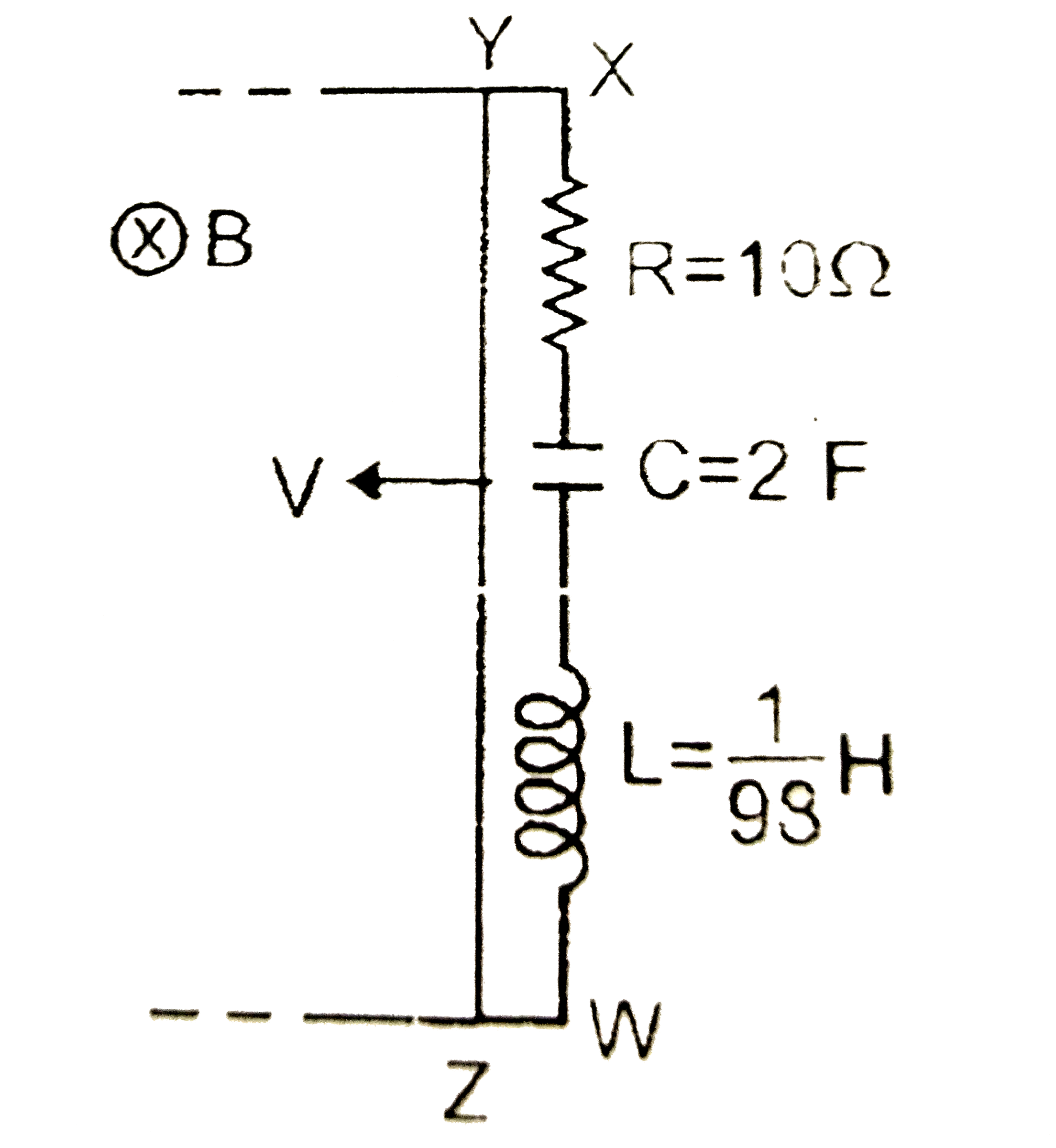
The correct Answer is:7
ω=1√3
ω=7
Similar Questions
A wire of mass m and length l can slide freely on a pair of fixed, smooth.vertical rails (figure).A magnetic field B exists in the region in the direction perpendicular to the plane of the rails.The rails are connected at the top end by an initially unchanged capacitor of capacitance C.Find the velocity of the wire at any time (t) after released.Neglecting any electric resistance.(initial velocity of wire is zero)
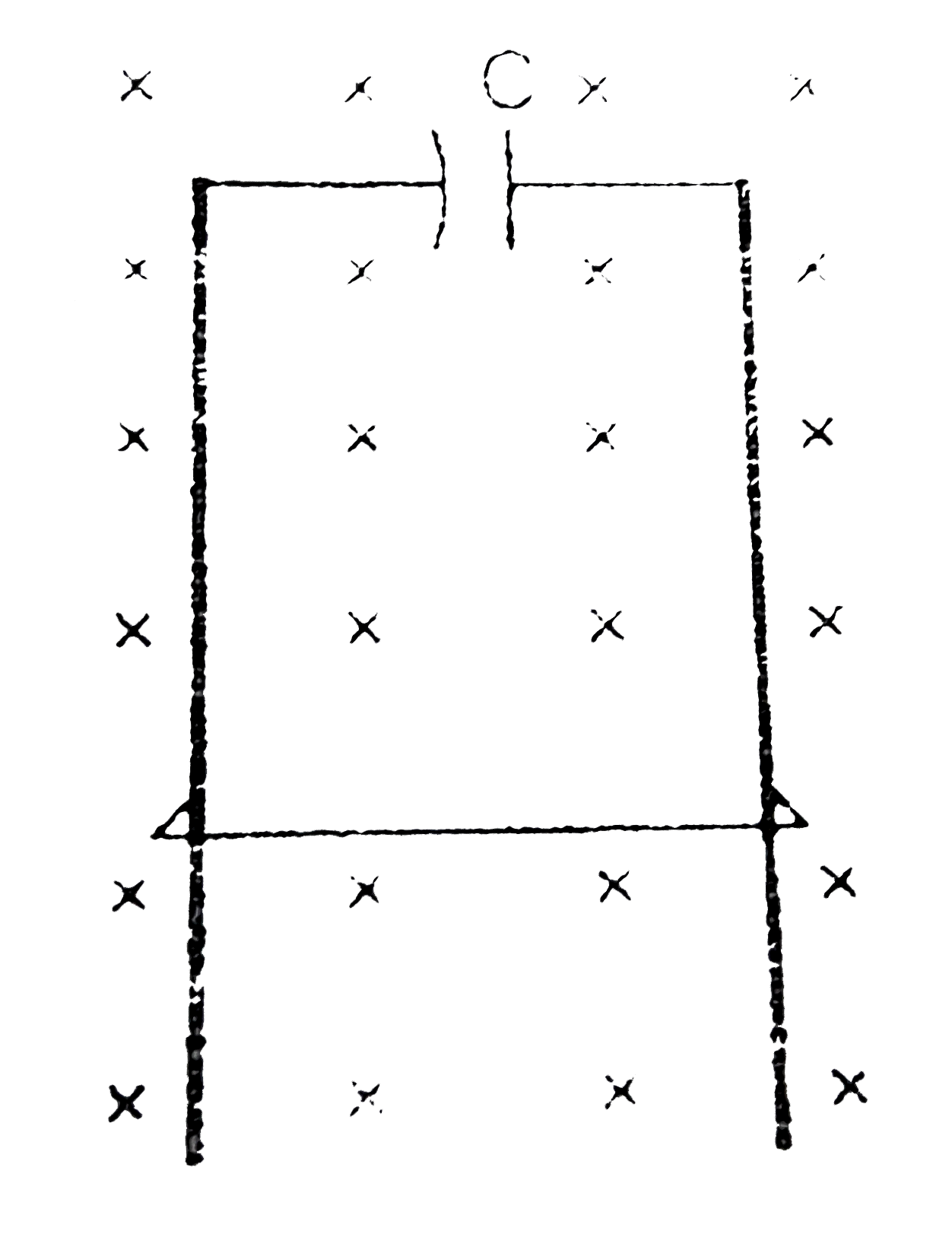 View Solution
View Solutionin fig. The four rods have λ resistance per unit length. The arrengement is kept in a magnetic field of constant magnitude B and directed perpendicular to the plane of the figure and directing in ward. Initially, the sides as shown form a square. Now each wire starts moving with constant velocity v toward the opposite wire.
Find as a function of time:
(a) induced emf in the circuit.
(b) induced current in the circuit with direction.
( c ) force required on each wire to keep its velocity consatnt.
(d) total power required to maintain constant velocity.
(e) thermal power developed in the circuit.
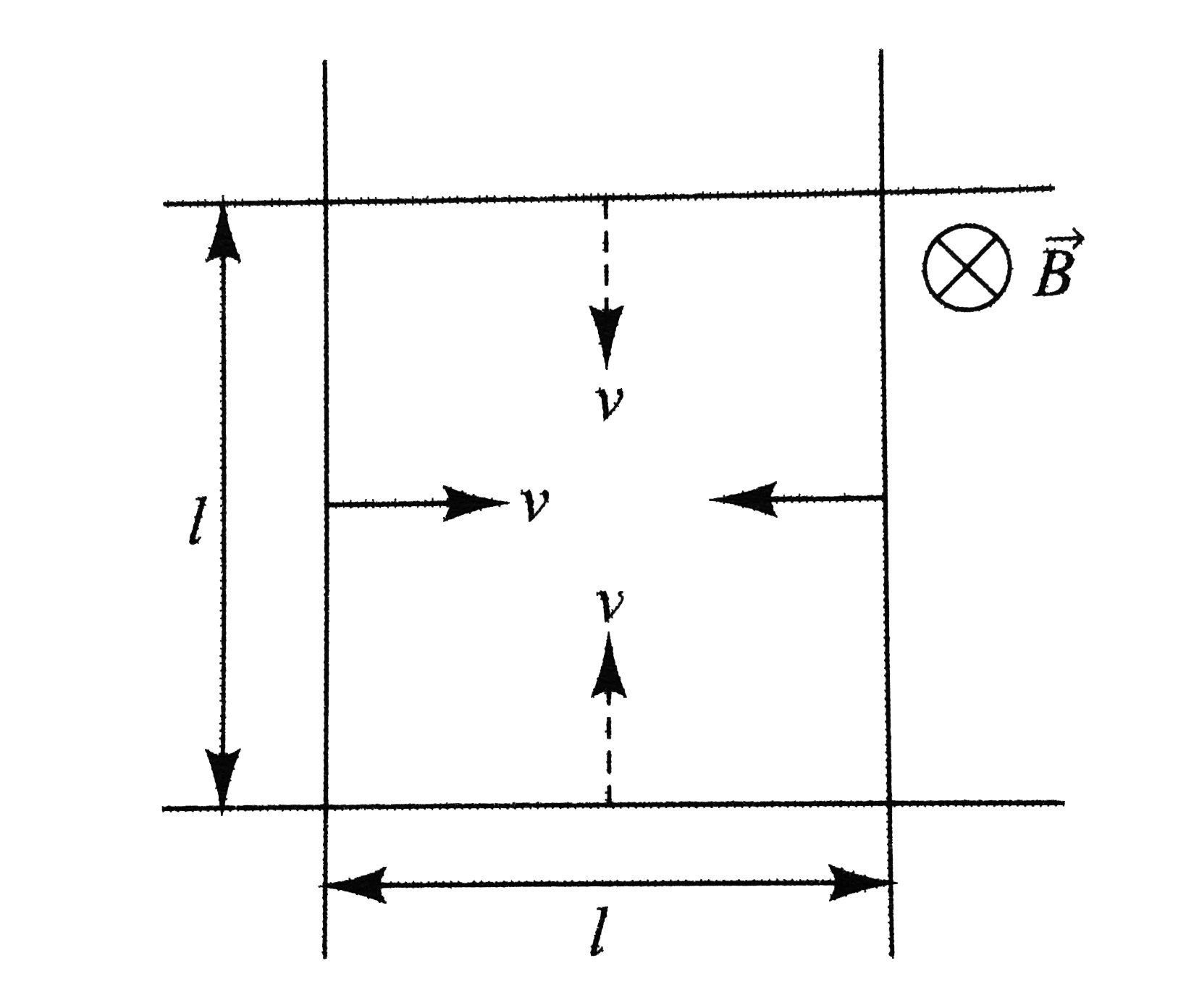 View Solution
View Solution
Knowledge Check
- Question 1 - Select One or More
A V-shaped conducting wire is moved inside a magnetic field as shown in figure. Magnetic fiel d is perpendicular to paper inwards. Then
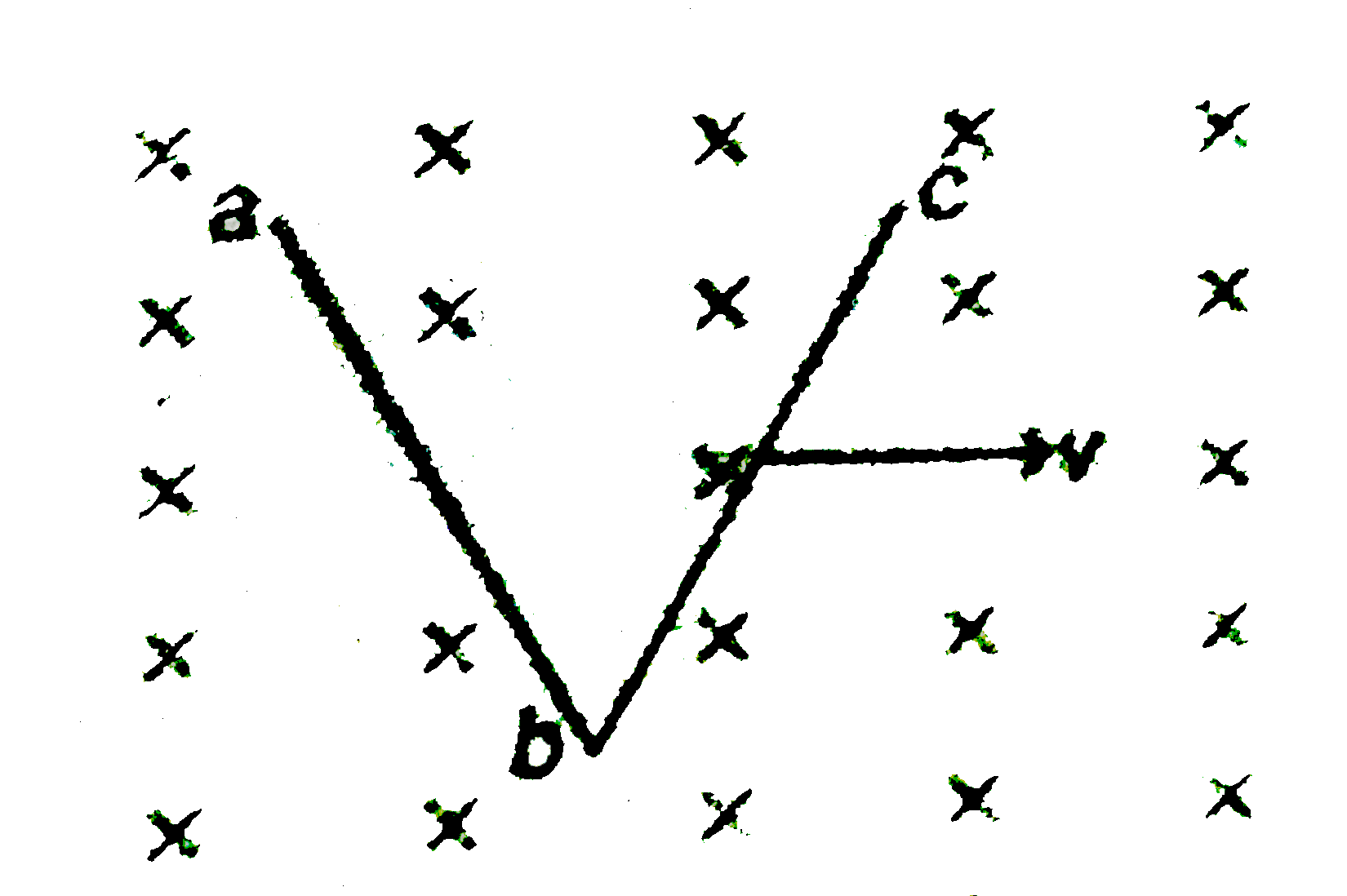 AVa=VcBVa>VcCVa>VbDVc>Vb
AVa=VcBVa>VcCVa>VbDVc>Vb - Question 2 - Select One
In the figure shown a T-shaped conductor moves with constant angular velocity ω in a plane perpendicular to uniform magnetic field B. The potential difference VA−VB is
 AzeroB12Bωl2C2Bωl2DBωl2
AzeroB12Bωl2C2Bωl2DBωl2 - Question 3 - Select One
A wire KMN moves along the bisector of the angle θ with a constant velocity v in a uniform magnetic field B perpendicular to the plane of the paper and directed inward. Which of the following is correct?
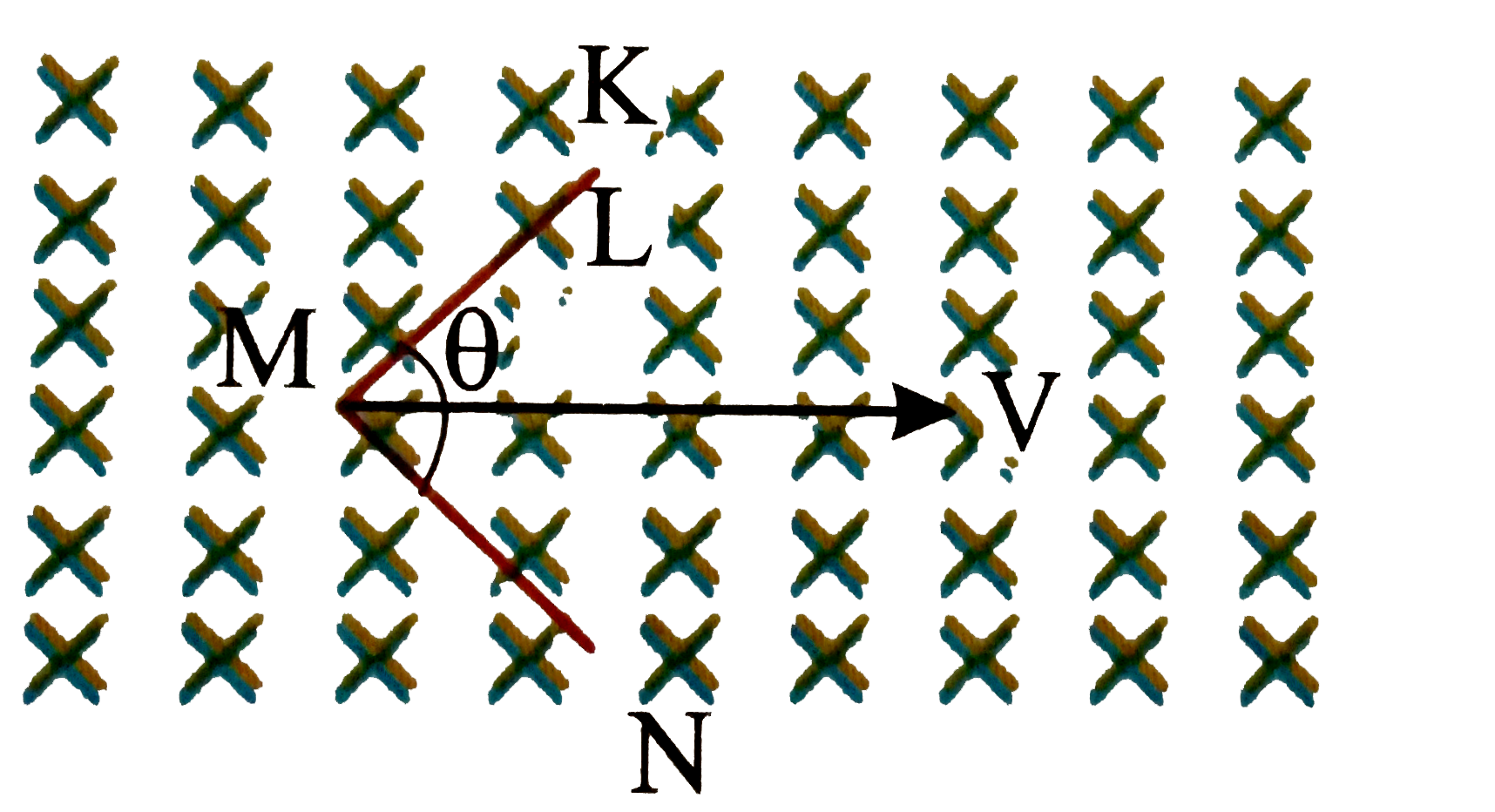 AEffective length of the wire is 2Lsinθ2BE.m.f induced between K and N is 2BLVsinθ2CThe shape of KMN is immaterial, only the end points KN are important.DAll the above
AEffective length of the wire is 2Lsinθ2BE.m.f induced between K and N is 2BLVsinθ2CThe shape of KMN is immaterial, only the end points KN are important.DAll the above
A copper wire bent in the shape of a semicircle of radius r translates in its plane with a constant velocity v. A uniform magnetic field B exists in the direction perpendicular to the plane of the wire. Find the emf induced between the ends of the wire if (a) the velocity is perpendicular ot the diameter joining free ends, (b) the velocity is parallel to this diameter.
View SolutionA uniform magnetic field B exists in a direction perpendicular to the palne of a square frame made of copper wire. The wire has a total length of 40cm . The magnetic field changes with time at a steady rate (dB/dt)=0.02T/sec . Find the current induced in the frame. Resistance of wire =I0Ω
View SolutionIn the figure shown the four rods have λ resistance per unit length. The arrangement is kept in a magnetic filed of constant magnitude B and directed perpendicular to the plane of the figure and direction inwards. Intially the sides as shown from a square. Now each wire starts moving with constant velocity v towards opposite wire. Find as a function of time:
(a) induced emf in the circuit
(b) induced current in the circuit with direction
 View Solution
View SolutionIn the figure shown the four rods have λ resistance per unit length . The arrangement is kept in a magnetic field of constant magnitude B and directed perpendicular to the plane of the figure and direction inwards . Initially the sides as shown form a square . Now each wire starts moving with constant velocity v towards opposite wire . Find as a function of time .

Induced current in the circuit with directionView SolutionIn the figure shown the four rods have λ resistance per unit length . The arrangement is kept in a magnetic field of constant magnitude B and directed perpendicular to the plane of the figure and direction inwards . Initially the sides as shown form a square . Now each wire starts moving with constant velocity v towards opposite wire . Find as a function of time .

Force required on each wire to keep its velocity constant .View Solution

